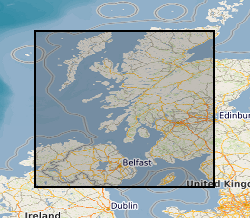Caesium
Type of resources
Available actions
Topics
Keywords
Contact for the resource
Provided by
Years
Formats
Update frequencies
-

Data collected as part of the NERC funded Radioactivity and the Environment (RATE), Long-lived Radionuclides in the Surface Environment (Lo-RISE), research consortium.This data comes from the marine workstream group based at the Scottish Universities Environmental Research Centre (SUERC) and the Scottish Association for Marine Science (SAMS). The data consists of radionuclide measurements of environmental and biological samples including radiocarbon, caesium (137), americium (241) and plutonium (238, 239, 240).The data has been published in the following publications: Tierney et al., 2018. Modelling Marine Trophic Transfer of Radiocarbon (14C) from a Nuclear Facility. Ecosystem Modelling and Software 102, 138-154. Tierney et al., 2017. Nuclear Reprocessing-Related Radiocarbon (14C) Uptake into UK Marine Mammals. Marine Pollution Bulletin 124, 43-50. Muir et al., 2017. Ecosystem Uptake and Transfer of Sellafield-Derived Radiocarbon (14C). Part 1: The Irish Sea. Marine Pollution Bulletin 114, 792-804. Tierney et al., 2017. Ecosystem Uptake and Transfer of Sellafield-Derived Radiocarbon (14C). Part 2: The West of Scotland. Marine Pollution Bulletin 115, 57-66 Tierney et al., 2016. Accumulation of Sellafield-derived 14C in Irish Sea and West of Scotland Intertidal Shells and Sediments. Journal of Environmental Radioactivity 151, 321-327.
 NERC Data Catalogue Service
NERC Data Catalogue Service